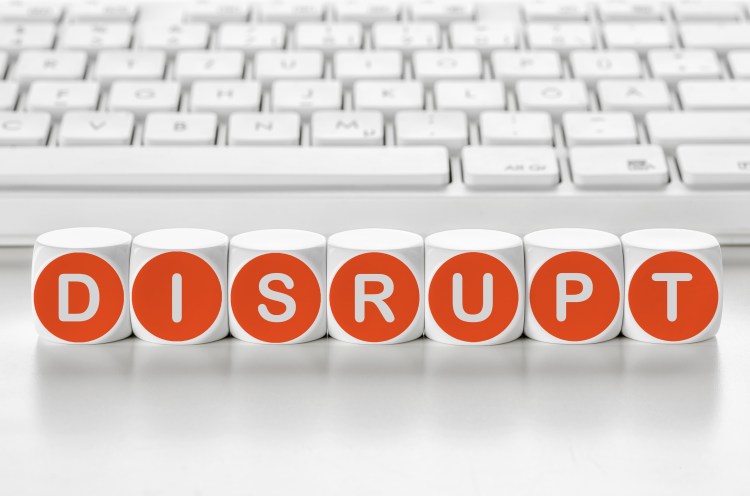Want smarter insights in your inbox? Sign up for our weekly newsletters to get only what matters to enterprise AI, data, and security leaders. Subscribe Now
Mobile ad tech has evolved rapidly in recent years. As advertiser spend has increased greatly, there has been a correspondingly huge growth in tools and platforms to help app publishers earn as much revenue as possible through their in-app advertising.
One of the hottest topics in ad monetization right now is mediation. In principle, mediation is a wonderful thing for app publishers. It enables you to aggregate demand from different networks, making each demand source compete for your available impressions. The increase in demand leads to higher competition which, in turn, results in better fill rates and eCPMs (effective cost per thousand impressions) and, ultimately, ad revenue.
Mediation may sound like a perfect solution to managing your ad waterfall but, in reality, the industry is riddled with problems. This is highlighted by the fact there is very little loyalty between large publishers and their mediation platform, with many working on annual contracts that are instigated by six-figure integration bonuses.
So, what are the biggest problems which underpin the industry, and how can this part of the ad tech ecosystem be changed for the better?
Most mediation is not real time
The technology used by the majority of platforms today is still very much in its infancy. Many mediation solutions claim to make decisions in real time by looking at bids from each demand source and selecting the highest bid for that specific impression. However, this isn’t strictly true for large volumes of demand.
Most ad networks do not provide bid data to mediation platforms. In order for a mediation company to decide which network they deem to be the highest paying, they must use historical data provided via reporting APIs. The problem here is that data within the reporting APIs can be up to 48 hours old and contain aggregated information. It’s certainly not a real-time environment where each network bids against one another for each impression.
While the above is true for a huge volume of demand accessed through mediation platforms today, publishers can access real-time bids for their inventory if the mediation platform is connected to a DSP (demand-side platform). However, mediation platforms need to be much clearer about how their platforms actually work and avoid using misleading marketing material to describe how a publisher’s ad waterfall is managed.
Many platforms are biased
Make no mistake, making money as a mediation platform is tough. One of the most popular ways mediation platforms earn money is by injecting their own demand into a publisher’s waterfall, which is usually compulsory. In effect, the mediation platform takes a percentage of a publisher’s impressions and sells this to advertisers directly. The publisher then earns a commission from this sold inventory, just as they do from other ad networks. Because of this, many mediation platforms market themselves as “free.” This is very misleading, and here’s why.
Broadly speaking, it’s easy to check if a mediation platform’s own demand is being allocated the correct volume of impressions, as it is visible in their reporting. However, the more important question to ask is, which impressions have the mediation platform taken?
Not every impression in your app has the same value. For example, the first impression in your waterfall is going to earn you more than your tenth impression. So, while a mediation platform may only have taken 5 percent of your impressions, if all these impressions were the first impression, then their performance will look stronger than it actually is, and you will likely have lost revenue due to your most valuable inventory being made non-competitive.
Some platforms have got to be more transparent about this side of their business and provide reporting that clearly highlights which demand is getting access to which impressions. Ultimately, by having their own demand in the mix, mediation platforms have a conflict of interest. To what extent do they optimize their own revenue versus yours?
Hidden commissions
One thing that many mediation platforms don’t disclose is the fact they make money from most of their demand partners. For example, if a mediation platform is integrated with demand source A, B, and C, they will likely be taking varying amounts of advertiser commission from each, typically ranging between 3 percent and 6 percent of overall earnings.
Do you trust that this doesn’t affect their weighting on what appears within your waterfall? If ad network A pays out a much better commission than ad network B, which will receive more exposure?
The fact is, most mediation partners need to take a commission from their demand partners, as margins are already tight. But this needs to be documented and explained to publishers.
With the above said, as with all areas of ad tech, improvements are being made at a rapid rate, and this is something that Christian Calderon, chief revenue officer at Ketchapp, is excited about. He told me:
“Mediation is good and here to stay, the increased competition in the marketplace is forcing providers to improve their technology and service, and we think over the next six to 12 months publishers are going to see some exciting developments in the space.”
For the foreseeable future, though, publishers need to be aware of exactly how their chosen platform works, and how they make their money.
 Dom Bracher is cofounder and CPO at Tapdaq, a platform that enables mobile developers to grow and monetize their apps with powerful cross-promotion and unbiased ad mediation.
Dom Bracher is cofounder and CPO at Tapdaq, a platform that enables mobile developers to grow and monetize their apps with powerful cross-promotion and unbiased ad mediation.


